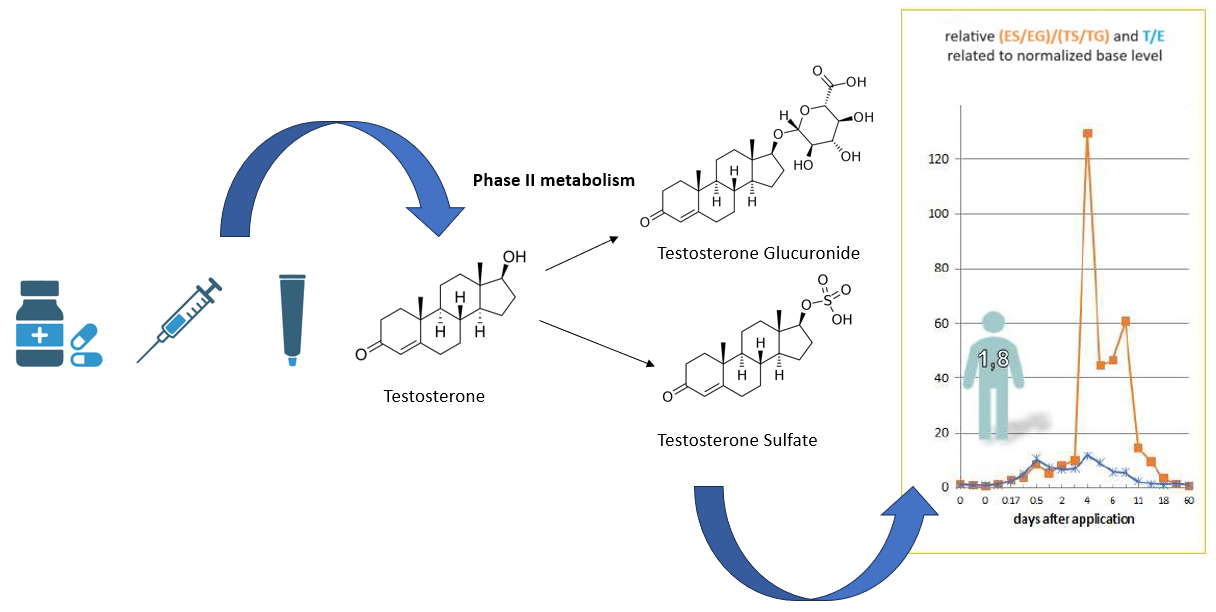The Combined Ratio: Phase II metabolites of endogenous steroids as basis for the detection of testosterone doping
Short overview
The goal of doping control is to provide fairness and equal opportunities for athletes and to reduce drug-induced health risks by exposing substance abuse. It is important to improve testing strategies and analytical methods to overcome weaknesses of the current monitoring system and to handle the increasing number of samples and requirements. The detection of endogenous steroids, for example, testosterone, presents a particular challenge because of the natural occurrence of these substances in the human body.

Project description
Today, doping with pseudo-endogenous anabolic steroids like testosterone or testosterone derivatives is monitored by a longitudinal follow up of the individual athlete’s steroid profile. The profile consists of concentrations and ratios of various endogenously produced steroidal hormones, as well as their precursors and metabolites. Detection of these substances in routine doping analysis is based on selective hydrolysis of glucuronide metabolites in urine, resulting in the measurement of free, unconjugated steroids. Although the current strategy in steroid profiling represents an efficient detection of doping with endogenous steroids, there are still challenges in revealing for instance doping with some low-dose administration forms or testosterone doping especially in female athletes. Hence, additional approaches are needed to improve the detection capabilities. Initial studies1,2 have shown the potential in investigating phase II metabolites of endogenous steroids. A new, promising marker for the intake of exogenous testosterone, called the “combined ratio”, including glucuronides and sulfates of testosterone and epitestosterone has been proposed.
Aim of the current research project is to evaluate the applicability of the “combined ratio” and other phase II metabolites of endogenous steroids for the detection of doping with testosterone or testosterone derivatives after the application of various forms of testosterone (gel, tablet, injection) for both, female and male samples. After improvement of LC-HRMS analysis of phase II metabolites of endogenous steroids, the concept of the combined ratio as a complementary biomarker for testosterone abuse will be introduced into the routine analysis of doping control samples. The research project is conducted in close cooperation with the doping control laboratory in Seibersdorf, Austria (Seibersdorf Laboratories).
- Forsdahl G, Zanitzer K, Erceg D, Gmeiner G. Quantification of endogenous steroid sulfates and glucuronides in human urine after intramuscular administration of testosterone esters. Steroids. 2020;157:108614. 10.1016/j.steroids.2020.108614
- Schulze J, Pettersson-Bohlin K, Thorngren JO, Ekstrom L. Re-evaluation of combined ((ES/EG)/(TS/TG)) ratio as a marker of testosterone intake in men. Drug Test Anal. 2021;13(8):1576-1579. 10.1002/dta.3045